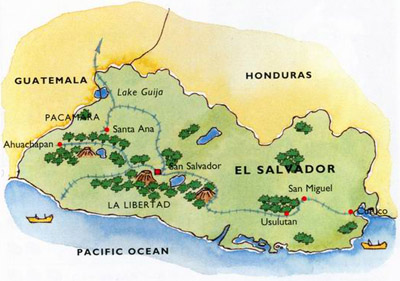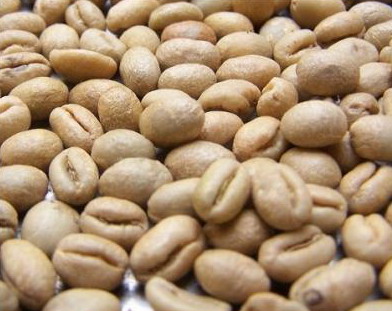Boutique coffee beans: Ethiopian Sidamo Lion King sun-dried coffee beans
Coffee beans details:
1. Country: Ethiopia
two。 Grade: G1
3. Production area: Guji
4. Planting altitude: 1800-2000m
5. Soil type: volcanic laterite
6. Annual rainfall: 1100-1200 cm
7. Treatment: insolation
8. Variety: native species (Heirloom)
9. Disposal site: Sirsa Cooperative
10. Raw bean specification: 17-18 mesh
11. Flavor: Jasmine, honey, citrus, ripe berries
The coffee flavor of Sidamo is very diverse, and the different soil types, microclimate and countless native coffee species make the coffee produced in each town have obvious differences and characteristics. In 2010-12, it won three consecutive high marks from coffee review 92 to 94, which shows the extraordinary value of raw beans in this area! The territory is covered by towering mountains, highlands, plateaus, valleys and plains with a variety of topography. The geology of the area belongs to the fertile and well-drained volcanic soil, which is nearly two meters deep and the surface soil is dark brown or brown. The biggest advantage of this place is that the soil fertility is maintained through the circulation of natural organic matter, with the withered leaves or litter of the surrounding trees and the residual roots of plants as natural fertilizer. This batch is produced by Sirsa Shilcho Cooperative near Dilla Town. The cooperative was founded in 1976 and is currently a member of the Sidamo Farmers' Cooperative Union SCFCU (Sidamo Coffee Farmer Cooperative Union). We have screened the coffee again and again and selected this batch for excellent flavor.

Ethiopia is the country where coffee was first discovered. Today, there is still a lot of wild coffee for farmers to harvest in the primeval forest. Ethiopia is a country with poverty, drought and civil war, but it is still the most important coffee producer in terms of coffee quality and output, and it is also the best and top coffee producer in the past year or two.
Ethiopian coffee can be divided into two treatments. Washing treatment method II. Natural sun treatment. Nowadays, every cooperative or even a small coffee farm in Ethiopia produces coffee beans of the above two treatments at the same time, whether it is the well-known Yegashev producing area in Taiwan or the Sidamo producing area. Not only that, in Ethiopia, which is currently the country with the fastest development of coffee, it not only makes coffee different in treatment, but also makes aroma and taste different due to the adjustment of different techniques and processes. Yegashev sun beans are different from Sidamo sun beans in aroma, which often gives people an illusion. The aroma is mild, low-sinking, citric acid is soft and low-key, the consistency of flavor is high, and the taste of Isopia coffee beans is won by taste, while the strong aroma of Esopia coffee beans shows strong aroma, the weak flavor of citric acid is not obvious, and the complex flavor is characterized by flower or fruit fragrance.

In recent years, many emerging small producing areas or cooperatives in the Sidamo and Yegashev producing areas will be sold in the international market under the name of their own cooperatives or farms, which shows confidence in their own coffee. Hope to establish brand and loyalty in the international coffee market, coffee farmers insist on harvesting mature coffee beans and strictly handle every process. Both natural washing and natural tanning are outstanding, with an unexpected extremely fragrant aroma and excellent taste. I think this is why Ethiopian coffee is expected by coffee fans every year. For example, the Dutch government-assisted Red Cherry Project (Operation Cherry Red) impressed the world with the magnificent aroma of strawberry cookies in 2008 and Cambedo Manor in 2009, which has been reinforced by the sun beans produced in Ethiopia in recent years.
Local farmers in West Dharma manually select moderately mature coffee cherries for sun treatment, turning the coffee cherries on the scaffolding every two hours during the sun for about 15 to 17 days. to ensure that the coffee cherries are evenly and completely dry, followed by shelling and packaging.

Flavor
Dried fragrance: wild ginger, jasmine, honey, lemon peel
Wet fragrance: honey sweetness, maple syrup, cream, citrus, flower aroma
Flavor: strong fruit tonality, rich fruit flavors such as cantaloupe, strawberries, peaches and ripe berries, silky texture, clean and balanced taste, full-bodied and changeable finish.
Important Notice :
前街咖啡 FrontStreet Coffee has moved to new addredd:
FrontStreet Coffee Address: 315,Donghua East Road,GuangZhou
Tel:020 38364473
- Prev

Boutique coffee beans: Ataisi Manor in El Salvador, micro-batch washing Pacamara Pacamara
Coffee bean details: 1. Country: El Salvador 2. Grade: SHG 3. Production area: Izalco area of Sonsonate province 4. Planting height: 1800 meters 5. Picking season: January 6. Treatment: washing and fermentation, sun drying 7. Variety: Pakamara 8. Manor: Finca Ataisi 9. Flavor: nut chocolate, passion fruit, cream, strawberry El Salvador is located in Central America, north
- Next

The knowledge of round beans, also known as male beans (Peaberry) in coffee beans is good or bad
Peaberry or caracoli is a variety of coffee beans. In fact, male beans are a defect, officially speaking, coffee beans that cannot develop normally. The causes are usually insect damage, drought, or malnutrition of coffee trees. Under normal circumstances, the fruit of the coffee tree contains two coffee beans, each of which is flat and hemispherical.
Related
- Guji coffee producing area of Guji, Ethiopia: Humbela, Shakiso, Wulaga
- What is the most expensive variety of Qiloso in BOP multi-variety group?
- How to store the coffee beans bought home?
- Why are Yemeni coffee beans so rare now?
- Ethiopian Sidamo all Red Fruit Sun Sun Santa Vini Coffee beans
- SOE is mostly sour? What does it mean? Is it a single bean? what's the difference between it and Italian blending?
- Is Italian coffee beans suitable for making hand-brewed coffee?
- How to choose coffee beans when making cold coffee? What kind of coffee beans are suitable for making cold coffee?
- Just entered the pit to make coffee, what kind of coffee beans should be chosen?
- Can only Japan buy real Blue Mountain Coffee? What are authentic Jamaican Blue Mountain coffee beans?

